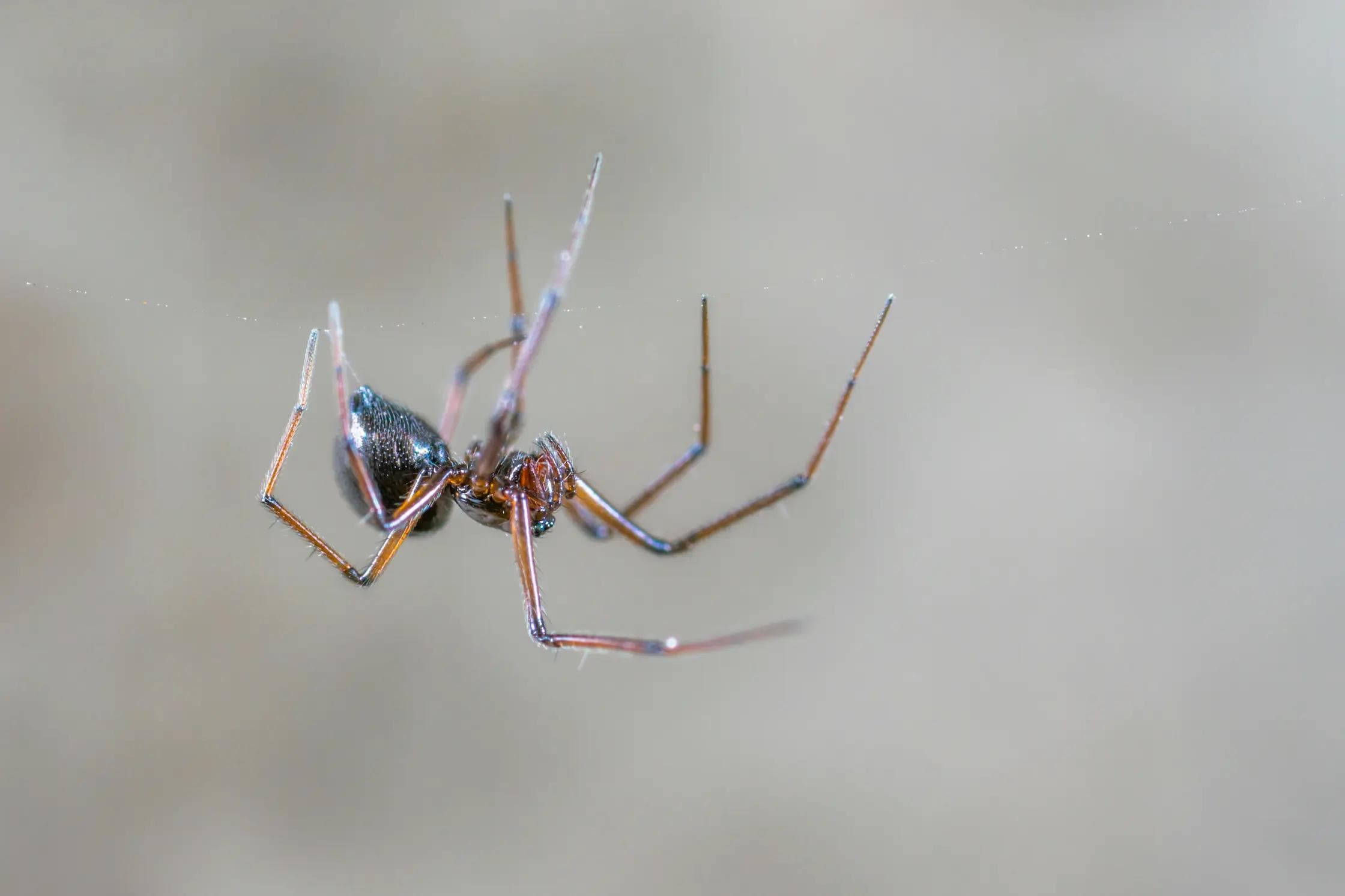
Sting movie

The Origins of Arachnophobia
Arachnophobia, the intense fear of spiders, has plagued humanity for centuries. This primal terror can be triggered by the mere sight of a spider, or even the thought of one lurking nearby. But where does this fear come from? Some experts believe it’s an evolutionary response, rooted in our ancestors' need to avoid potentially venomous creatures. Others suggest cultural factors, pointing to the portrayal of spiders as villains in folklore and media. Whatever the cause, arachnophobia is a real and debilitating condition for many.
It Crawls: Gaming the Fear Away
In a bid to tackle arachnophobia head-on, a new mobile game called "It crawls" has hit the app stores. Unlike traditional games that might inadvertently amplify fears, "It crawls" is designed with a therapeutic twist. The game guides players through a series of levels where they interact with increasingly realistic spider scenarios in a controlled and gradual manner - and guns :)
This method, known as exposure therapy, helps players desensitize themselves to spiders, transforming fear into familiarity.
"It Crawls" starts gently, with cartoonish, almost friendly spiders. As players progress, the spiders become more intense. By the final levels, players find themselves virtually navigating through environments crawling with many (many, many, many) spiders. But you get guns (and more and more and more guns) - and bombs. To cure your arachnophobia :)
The Buzz About “Sting”
While "It crawls" offers a playful approach to curing arachnophobia, the upcoming horror movie "Sting" takes the fear to a whole new level. Directed by acclaimed horror maestro, Kiah Roache-Turner, "Sting" promises to be a spine-chilling addition to the genre. The plot centers around 12-year-old Charlotte, a young girl who discovers an unusual spider in her backyard. Fascinated by its unique abilities, Charlotte secretly raises the spider, unaware of the terrifying transformation it will undergo.
As the spider grows, so does its appetite – and it’s not just bugs on the menu. Charlotte’s seemingly innocent pet becomes a monstrous, flesh-eating beast, turning her quiet suburban life into a nightmare. The film’s tension escalates as Charlotte battles to protect her family from the creature she once cared for. With its mix of suspense, horror, and emotional depth, "Sting" is set to tap into our deepest fears and keep audiences on the edge of their seats.
User reviews go like:
"Definitely worth a look" - 17. May 2024
"Was a good one! Try to go in unaware" - 14. April 2024
Facing Our Fears: The Dual Nature of Spiders in Pop Culture
The contrast between "It crawls" and "Sting" highlights the dual nature of spiders in our collective psyche. On one hand, we recognize the irrationality of our fears and seek ways to overcome them through technology and therapy (and rifles). On the other hand, we’re drawn to the thrill of horror, where our fears are amplified and explored in the safety of a darkened theater.
Spiders, with their eight legs and multifaceted eyes, embody the unknown. They move in ways that seem alien to us, weaving intricate webs and lurking in shadows. This combination of fascination and fear makes them perfect subjects for both horror and therapeutic exploration.
A Closer Look at “Sting”
"Sting" delves deep into the psychological aspects of arachnophobia. Charlotte’s journey from affection to horror mirrors the real-life experience of many arachnophobes. Initially, the spider’s uniqueness and charm captivate her. She’s proud of her unusual pet and even names it, treating it like a friend. But as the spider’s true nature reveals itself, her world spirals into chaos.
The movie’s horror elements are meticulously crafted. Roache-Turner employs practical effects and CGI to create the spider’s transformation from a small, intriguing creature into a gigantic, menacing monster. The tension is palpable, with every creak and shadow adding to the suspense. The sound design, too, plays a crucial role, with the spider’s movements and the eerie silence of its stalking heightening the terror.
Why We Love to Be Scared
Why do we subject ourselves to horror movies like "Sting"? The answer lies in the thrill. Horror movies provide a safe environment to confront our fears. We know it’s just a movie, and when the credits roll, we can return to our spider-free lives. This controlled exposure can actually help reduce real-life fears, similar to the principles behind "It crawls".
Moreover, horror movies offer a sense of catharsis. Watching Charlotte fight back against the monstrous spider, we experience a release of built-up tension. We root for her, empathize with her struggles, and feel a sense of triumph when she confronts her fears.
Overcoming Arachnophobia: Tips and Tricks
For those who aren’t quite ready for "It crawls" or "Sting", there are other ways to tackle arachnophobia. Here are a few tips:
1. Educate Yourself
Understanding that most spiders are harmless can reduce fear. Learning about their role in the ecosystem can also foster a sense of respect rather than fear.
2. Gradual Exposure
Start with pictures of spiders, then move to videos, and eventually real-life encounters in controlled settings. This gradual exposure can help desensitize your fear.
3. Relaxation Techniques
Practice deep breathing, meditation, or progressive muscle relaxation to calm your mind and body when you encounter a spider.
4. Professional Help
If your fear is severe, consider seeking help from a therapist who specializes in phobias. Cognitive-behavioral therapy (CBT) is particularly effective for treating arachnophobia.
5. Support Groups
Joining a support group can provide encouragement and practical advice from others who have faced similar fears.
Embracing the Unknown
Arachnophobia, like all fears, can be paralyzing, but it can also be overcome. Whether through playful games like "It Crawls", therapeutic techniques, or the thrilling narrative of "Sting", there are many ways to face and conquer this common phobia. By understanding our fears and confronting them, we can transform our relationship with the eight-legged creatures that share our world.
So, the next time you see a spider, whether it’s in your home, in a game, or on the big screen, remember that fear is a part of being human. Embrace it, challenge it, and who knows – you might just find yourself fascinated by the very thing you once dreaded.
Conclusion: From Fear to Fascination
In the end, spiders will continue to weave their webs in both our homes and our imaginations. The choice of how we respond to them – with fear or curiosity – is ours. "It Crawls" offers a unique and engaging way to gradually diminish our fears, transforming arachnophobia into a manageable, even conquerable challenge. Meanwhile, "Sting" provides a thrilling ride through the darker aspects of our psyche, reminding us why spiders have been such enduring figures in the realm of horror.
Whether you're playing a game, watching a movie, or simply encountering a spider in your daily life, remember that fear is a journey, not a destination. With the right tools and mindset, even the most daunting phobias can be overcome. And who knows – you might even come to appreciate the beauty and complexity of these misunderstood creatures.
